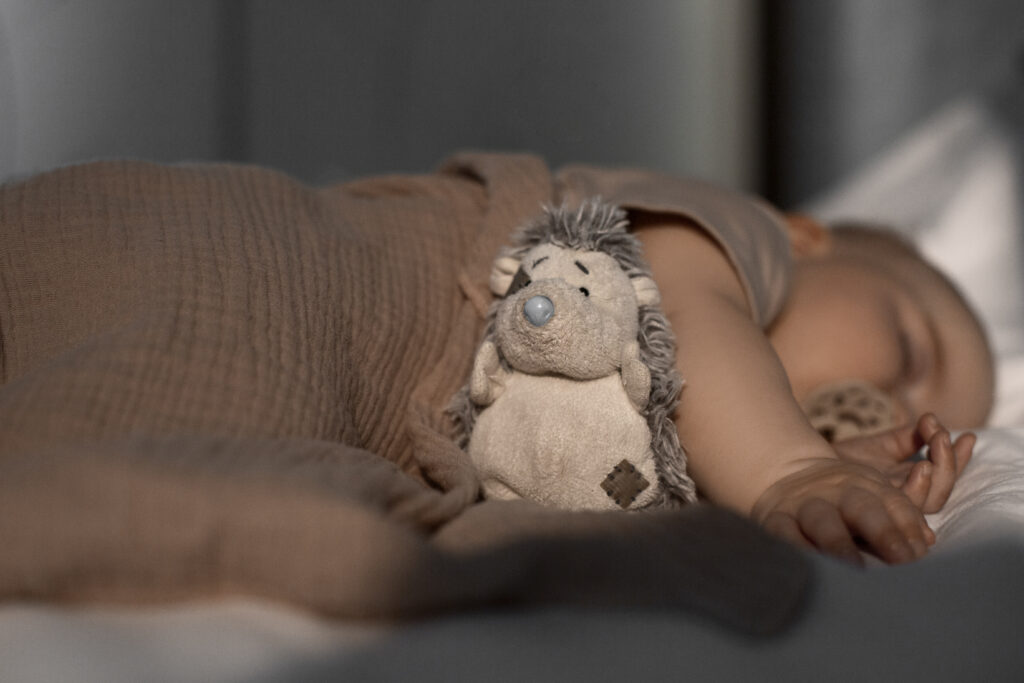Spread the love
Let’s dive into sleep training methods, or baby Sleep Training Methods, and troubleshooting! I’ll outline some of the most effective sleep training techniques and provide tips based on common challenges.

POPULAR SLEEP TRAINING METHODS
01. Ferber Method (Check and Console)
- Gradually teach your baby to self-soothe by checking on them at increasing intervals when they cry.
- How it works:
- Put your baby down awake but drowsy.
- When they cry, wait a set time (e.g., 3 minutes), then briefly comfort them without picking them up.
- Gradually increase the waiting time (5 minutes, 10 minutes, etc.).
- After several nights, they should begin to self-soothe.
- Best for: Parents who want a structured method and are okay with some crying.

02. Chair Method (Gradual Withdrawal)
- Sit near your baby as they fall asleep, gradually moving farther away each night.
- How it works:
- Start by sitting close to their crib. Offer verbal reassurance or gentle touches if needed.
- Move the chair farther from the crib each night until you’re out of the room.
- Best for: Parents who prefer a gentle approach with less crying.
03. Pick-Up, Put-Down
- Respond to your baby’s cries by picking them up to soothe, but put them down once calm.
- How it works:
- Put your baby down awake but drowsy.
- If they cry, pick them up to calm them, then put them back down immediately.
- Repeat as needed, aiming to reduce the frequency over time.
- Best for: Parents who want a hands-on but gentle method.
04. Cry It Out (Extinction Method)
- Allow your baby to self-soothe by not intervening when they cry.
- How it works:
- Put your baby down awake but drowsy, and do not respond to cries.
- Check on them in the morning.
- Best for: Parents who can handle more crying and want quicker results.
Note: This method can be challenging and may not suit everyone.

TROUBLESHOOTING SLEEP ISSUES
01. Resistance to Falling Asleep
- Ensure wake windows are age-appropriate (about 2–3 hours between naps for a 7-month-old).
- Create a consistent bedtime routine: bath, pajamas, feeding, story, song, crib.
02. Frequent Night Wakings
- Gradually reduce nighttime feeds if your baby isn’t hungry (offer comfort instead).
- Rule out discomfort from teething or illness.
03. Short Naps or Over-Tiredness
- Encourage naps during the day to prevent overtiredness, which can disrupt nighttime sleep.
- Watch for sleep cues like rubbing eyes or yawning.
04. Parental Inconsistency
- Stick with one method for at least a week to give your baby time to adjust.
Here are additional strategies and tips to improve your 7-month-old’s sleep and troubleshoot common challenges. These include advanced techniques, routines, and ideas tailored to different situations.

ADDITIONAL SLEEP TRAINING METHODS
05. The Fading Method
- Gradually reduce your involvement in your baby’s sleep routine over time.
- How it works:
- If you rock your baby to sleep, begin rocking for shorter periods each night.
- If you nurse or bottle-feed to sleep, transition to feeding earlier in the bedtime routine.
- Best for: Babies heavily reliant on sleep associations.
06. Bedtime Shuffle
- Similar to the Chair Method, it adds flexibility.
- How it works:
- Stay in the room initially and offer comfort, then gradually reduce your presence (e.g., move to a chair outside the door).
- Adjust your pace based on how your baby responds.
- Best for: Parents who want a mix of hands-on and hands-off techniques.
07. Habit Stacking
- Replace one sleep association with another, then gradually reduce the new habit.
- How it works:
- If your baby relies on being rocked, introduce a pacifier or lovey while rocking.
- Gradually phase out rocking, leaving only the pacifier or lovey.
- It is best for breaking strong sleep associations in stages.

COMMON CHALLENGES AND SOLUTIONS
Challenge 1: Early Morning Waking
Why does it happen?
- Baby is overtired or naps too long during the day.
- Solutions:
- Shift bedtime earlier by 15 minutes to prevent overtiredness.
- Caps naps at 2–2.5 hours total during the day.
- Keep the room dark in the morning to signal it’s still nighttime.
Challenge 2: Split Nights (Awake for Hours at Night)
Why does it happen?
- Over-tiredness, under-tiredness, or a disrupted sleep schedule.
- Solutions:
- Adjust wake windows to avoid too much or too little daytime sleep.
- Don’t immediately respond during nighttime wake-ups; allow self-soothing.
- Ensure naps don’t extend too late into the evening.
Challenge 3: Separation Anxiety at Night
Why does it happen?
- Developmental milestone around 6–8 months.
- Solutions:
- Stay consistent with bedtime routines to reassure your baby.
- Use a soothing voice or gentle touch without picking them up unnecessarily.
- Introduce a safe lovey or blanket (check for safety guidelines).
Challenge 4: Teething and Discomfort
Why does it happen?
- Sore gums, congestion, or other physical discomforts.
- Solutions:
- Use teething toys, or consult your pediatrician about baby-safe pain relief.
- Elevate the crib mattress slightly (place a wedge under one side) if congestion is an issue.
- Keep an eye out for ear infections or other illnesses.
Challenge 5: Inconsistent Naps or Daytime Schedule
Why does it happen?
- Erratic daytime routines or not enough sleep cues.
- Solutions:
- Aim for 2–3 naps daily, totaling 2–3 hours.
- Follow age-appropriate wake windows (about 2–3 hours).
- Avoid overstimulation before naps.

ENHANCING THE SLEEP ENVIRONMENT
- Optimize the Bedroom:
- Use blackout curtains to block light.
- Use white noise to drown out distractions.
- Comfortable Sleepwear:
- Dress your baby in breathable, season-appropriate layers.
- Safety Check:
- Ensure the crib is free of loose items like toys, pillows, or blankets.

DETAILED BEDTIME ROUTINE (20–30 Minutes)
01. Wind-Down Time (10 minutes):
- Dim the lights, turn off screens, and engage in quiet play.
02. Bath (5–10 minutes):
- Warm water helps relax your baby.
03. Massage or Pajamas (5 minutes):
- A gentle baby massage can soothe your little one.
04. Storytime or Song (5 minutes):
- Read a calming book or sing a lullaby.
05. Feed (if needed):
- Offer a final bottle or nursing session if part of your routine.
06. Crib Time:
- Place your baby in the crib awake but drowsy.
TRACKING PROGRESS
- Keep a Sleep Diary:
Note wake times, naps, bedtime, and wake-ups to identify patterns. - Be Patient and Consistent:
Most methods take about 7–10 days to show results, but every baby is different.

What Happens When Your Wife Stops Sleeping With You 2024

How To Wake Up Your Skin After Getting No Sleep 2024



3 thoughts on “Sleep Training Methods”